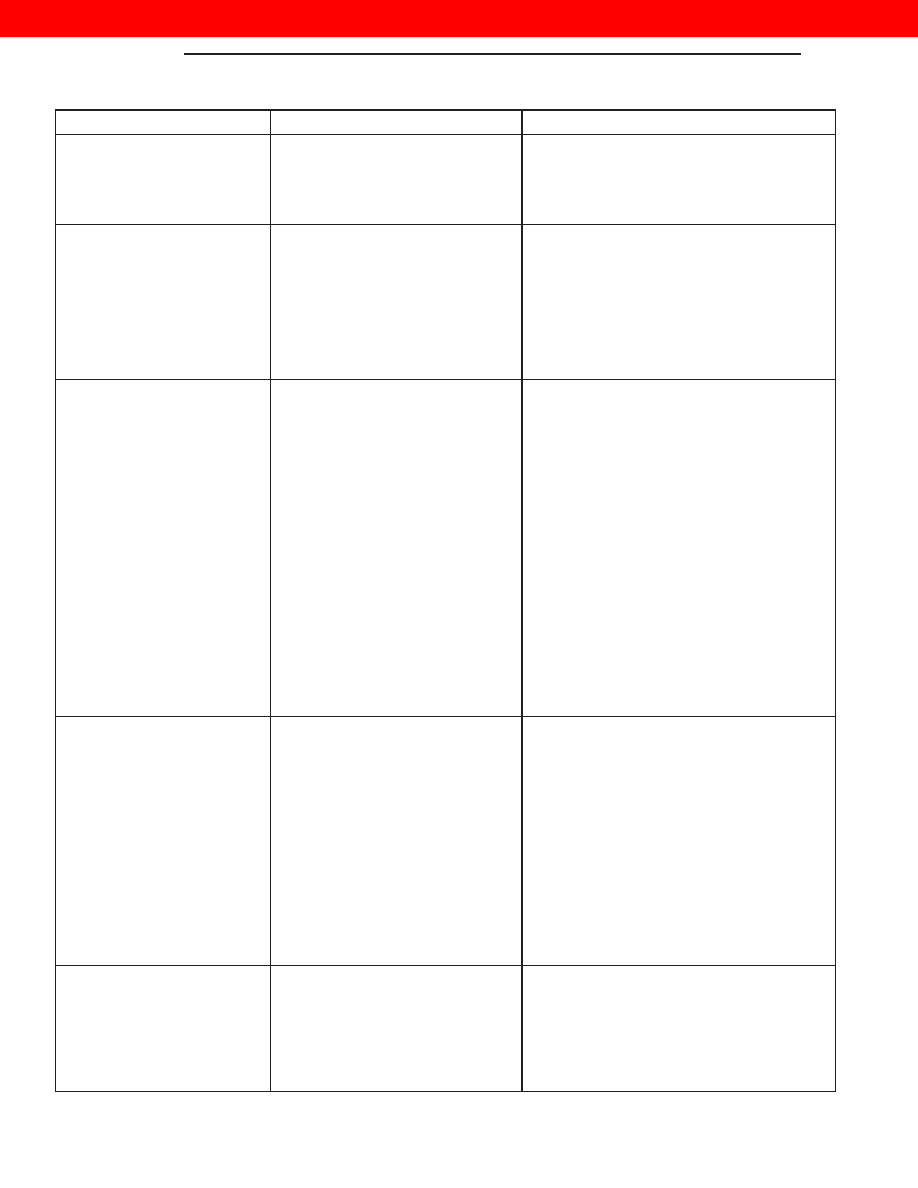Jeep Grand Cherokee WJ. Manual - part 347

CONDITION
POSSIBLE CAUSES
CORRECTION
LUBRICATING OIL LOSS
(CONT.)
6. Turbocharger leaking oil to the
air intake.
6. Inspect the air ducts for evidence of oil
transfer. Repair as required.
7. Piston rings not sealing (oil
being consumed by the engine.)
7. Perform blow-by check. Repair as
required.
COMPRESSION KNOCKS
1. Poor quality fuel or water/
gasoline contaminated fuel.
1. Verify by operating from a temporary tank
with good fuel. Clean and flush the fuel
supply tanks. Replace fuel/water separator.
2. Incorrect injection pump timing.
2. Check and time injection pump (refer to
Group 14, Fuel System).
3. Improperly operating injectors.
3. Check and replace inoperative injectors.
4. Wrong injection pump timing.
4. Check injection pump timing.
EXCESSIVE VIBRATION
1. Loose or broken engine
mounts.
1. Replace engine mounts.
2. Damaged fan or improperly
operating accessories.
2. Check and replace the vibrating
components.
3. Improperly operating vibration
damper.
3. Inspect/replace the vibration damper.
4. Improperly operating viscous
fan drive.
4. Inspect/replace the fan drive.
5. Worn or damaged generator
bearing.
5. Check/replace the generator.
6. Flywheel housing misaligned.
6. Check/correct flywheel alignment.
7. Loose or broken power
component.
7. Inspect the crankshaft and rods for
damage that causes an unbalance.
Repair/replace as required.
8. Worn or unbalanced driveline
components.
8. Check/repair driveline components.
EXCESSIVE ENGINE
NOISES
1. Drive belt squeal, insufficient
tension or abnormally high
loading.
1. Check the automatic tensioner and
inspect the drive belt. Make sure water
pump, tensioner pulley, fan hub and
generator turn freely.
2. Intake air or exhaust leaks.
2. Refer to Excessive Exhaust smoke
(Engine Diagnosis Performance).
3. Turbocharger noise.
3. Check turbocharger impeller and turbine
wheel for housing contact. Repair/replace as
required.
4. Gear train noise.
4. Visually inspect and measure gear
backlash. Replace gears as required.
5. Power function knock.
5. Check/replace rod and main bearings.
GENERATOR NOT
CHARGING OR
INSUFFICIENT CHARGING
1. Loose or corroded battery.
1. Clean/tighten battery connection.
2. Generator belt slipping.
2. Check/replace automatic abelt tensioner.
Check/replace and adjust belt.
3. Generator pulley loose on shaft.
3. Tighten pulley
4. Improperly operating generator.
4. Check/replace generator.
9 - 10
ENGINE
WJ
DIAGNOSIS AND TESTING (Continued)
2000 JEEP GRAND CHEROKEE